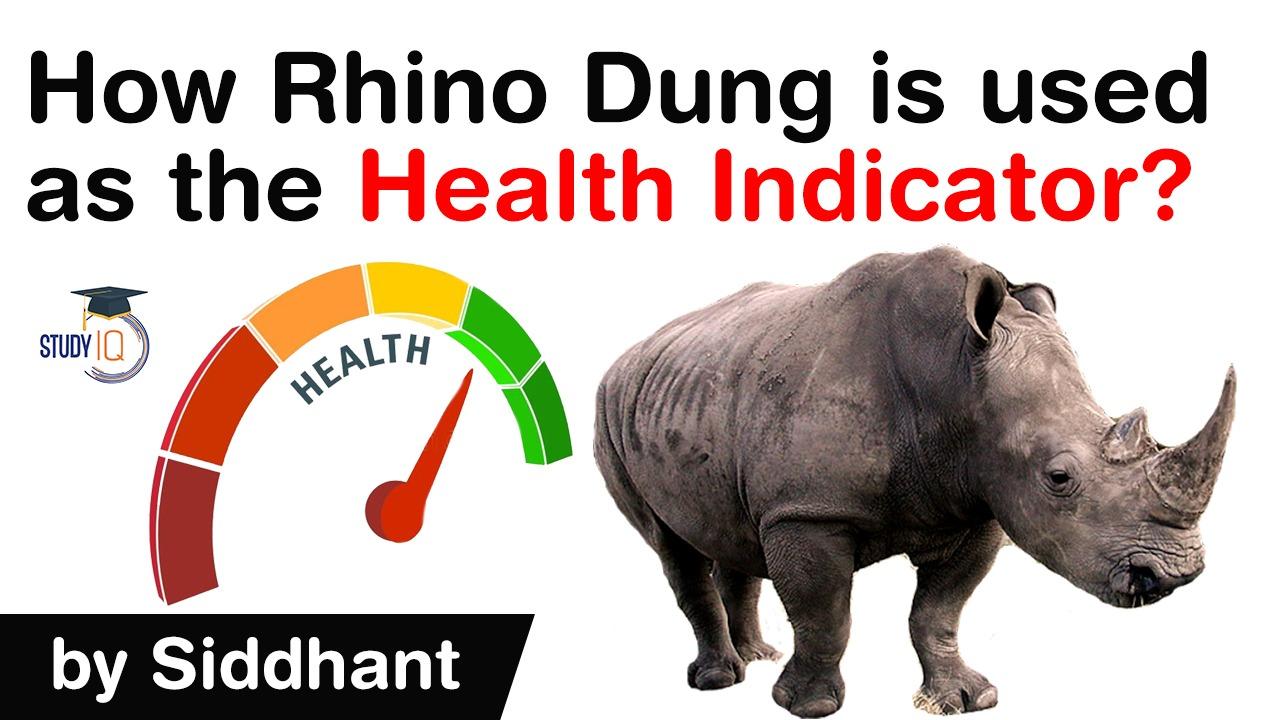Table of Contents
RHINOCEROS
- In conservation efforts for the greater one-horned rhinoceros population in India, the latest strategy is an examination of rhino dung to understand health issues of the animal.
- Since 2017, the Rhino Task Force of Assam and World Wildlife Fund India (WWF India) have been undertaking steps to study pathogens found in fresh rhino dung samples in Assam, Uttar Pradesh, and West Bengal. WWF India has recently published preliminary reports — ‘Prevalence of Endoparasitic Infections in Free-Ranging Greater One-Horned Rhinoceros’ — for Assam and West Bengal.
Why is such a project important?
- While poaching is believed to be the main cause of death in rhinos, rhinos also die of natural causes which have not been studied in great detail. “When a rhino carcass is found, the first question asked is: ‘Is the horn intact?’ If it is not, it means it was poached.
- Otherwise, it is considered a ‘natural’ death. There may be multiple reasons for a natural death but it is rarely investigated thoroughly,” said Bibhab K Talukdar, chair, Asian Rhino Specialist Group of International Union for Conservation of Nature/Species Survival Commission; Asia coordinator, International Rhino Foundation; and CEO and secretary general of the NGO Aaranyak.
How is the project being carried out?
- Till date, there has been no systematic study on the prevalence of disease-causing parasites and diseases caused by these in the rhino population in India.
- “In order to address this knowledge gap, the present study is a part of a series that involves screening of pathogens through a non-invasive method of dung sample analysis,” stated the report.
How is the project being carried out?
- Samples were collected from UP’s Dudhwa National Park; West Bengal’s Jaldapara National Park and Gorumara National Park; and Assam’s Rajiv Gandhi Orang National Park, Pobitora Wildlife Sanctuary, Manas National Park, and Kaziranga National Park.
- The researchers collected the samples fresh (not older than from the previous night), gave them unique IDs and sent them to the Department of Parasitology in the College of Veterinary Science, Assam Agricultural University, Guwahati.
What are the findings?
- From the samples from Assam and West Bengal, the study concluded that parasites from four genera were present in an estimated 68% of India’s rhino population.
- The overall prevalence of endoparasites was 58.57% in Assam and 88.46% in West Bengal; results from UP are pending.The endoparasites in Assam belonged to four genera: Amphistome spp, Strongyle spp, Bivitellobilharzia nairii and Spirurid spp, while West Bengal reported the prevalence of only Strongyle spp, Assam reported all four. “When comparing this [Bengal] study with that conducted in Assam, we find that the rhino population in West Bengal has a higher prevalence rate of infection, but the occurrence of different parasites were higher in Assam,” stated the report.
Latest Burning Issues | Free PDF






















 WhatsApp
WhatsApp